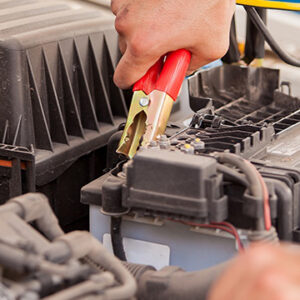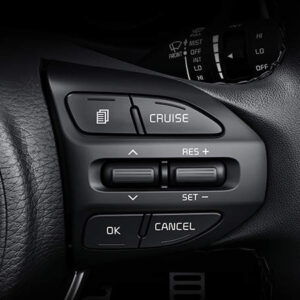What is TPMS? The purpose of the tire pressure monitoring system (TPMS) in your vehicle is to warn you that at least one or more tires are significantly under-inflated, possibly creating unsafe driving conditions. The TPMS low tire pressure indicator is a yellow symbol that illuminates on the dashboard instrument panel in the shape of a tire cross-section (that resembles a horseshoe) with an exclamation point.
What is TPMS?
A tire pressure monitoring system (TPMS) is a system in your car that alerts the driver when the air pressure drops inside the tire. This is an electronic system that connects the sensor (placed on the rim) with the monitor (on the vehicle’s dashboard) in order to show whether the tires are properly inflated or not.
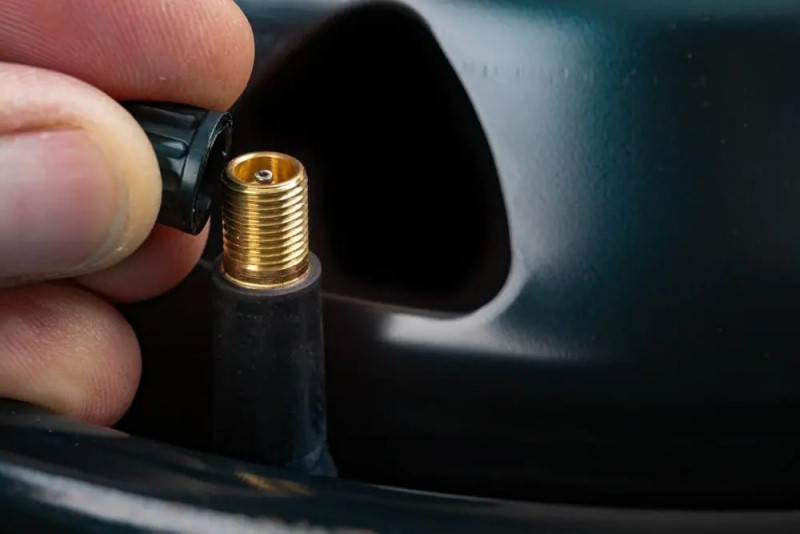
When air pressure loss occurs in the tire, the TPMS will notify the driver with a flat tire warning light. This means the tire is not at its proper inflation for some reason – which may be due to tire or valve damage, but either way, the tire needs to be reinflated and repaired.
These sensors ensure the tires do not reach dangerous levels of deflation, which can further damage the tire, the rim, and even the TMPS unit if one is not careful. For this reason, they have become a mandatory part of vehicle manufacturing in the US since 2008.
Tires that are not inflated correctly will have accelerated tread wear, shortening their service life. The lower inflation widens their footprint, compromising their driving safety and causing more pressure build-up during their performance – which will ruin their fuel economy.
Additionally, the wider footprint will ruin the tires’ wet weather performance, while also increasing the braking distance. In other words, it will ruin the vehicle’s performance and driving safety.
How Does a TPMS Work?
There are two different types of tire pressure monitoring systems available on the market. Generally speaking, their purpose is the same, but the way they operate is completely different.
Direct TPMS
Direct TPMS systems are the most common. This type uses sensors mounted onto the rims, inside the tire, to measure the inflation of each tire separately. When the air pressure in a tire drops below 25% from the recommended inflation level, the sensor notifies the computer system of the vehicle and the low-pressure warning light on the dashboard turns on.
Direct TPMS systems consist of 5 main parts: the 4 sensors mounted onto the wheel of each tire (usually near the valve stems) and the indicator in the vehicle’s computer system. Therefore, when it is time for the vehicle’s maintenance, replacing a direct TMPS system will be a bit more costly.
Advantages:
- Deliver actual tire pressure readings from inside the tire
- Not prone to inaccuracies because of tire rotations or tire replacements
- Simple resynchronization after tire rotation or tire replacements
- Batteries inside the sensors usually last for about a decade.
- May be included in a vehicle’s spare tire
Disadvantages:
- More expensive overall than an indirect TPMS
- Though simple, resynchronization may require costly tools.
- Battery rarely serviceable; if the battery is drained, the whole sensor must be changed.
- Proprietary systems make installation, service, and replacement confusing for consumers and auto shops.
- Sensors are susceptible to damage during mounting/demounting
There are two types of direct TPMS systems.
Direct TPMS – high line system
High line TPMS systems are fitted with low-frequency transmitters near the wheels, which are used by the vehicle to force the transmission between the sensor and the computer system. These types of sensors are not turned on and do not transmit constantly. Instead, the vehicle will regularly ask for information regarding the tire pressure levels from the sensors when the ignition is turned on and repeatedly during the drive.
The high line system activates the transmitters one after the other, which will help later determine which sensor has sent the low tire pressure warning. The sensors can be located based on their unique ID, which will show the position of the sensor. This system type offers the advantage of not draining the vehicle’s battery.
Direct TPMS – low line system
Low line TPMS systems use the units mounted on the wheels to transmit the tire’s air pressure levels on fixed or random intervals. However, as the sensors of the tires are not connected, they may transmit simultaneously.
This can lead to the collision of the pressure messages, and measures must be taken for the vehicle to be able to correctly receive them. To combat the collision of the messages, one TMPS system can send the same message multiple times.
Some low line systems make sure the TMPS units transmit more often and send more frequent transmissions when sudden change or high temperatures are detected. In this manner, the sensors make sure the vehicle receives the transmission. Most vehicles are equipped with this type of direct TMPS as it is less costly.
Indirect TMPS
Indirect TMPS systems work with the vehicle’s Antilock Braking System. The ABS monitors the wheel speed and it helps out the indirect TPMS system as well. When the tire pressure drops in the tire, it will roll at a varied wheel speed, compared to the other tires. The computer system notices this and makes the low-pressure light come on.
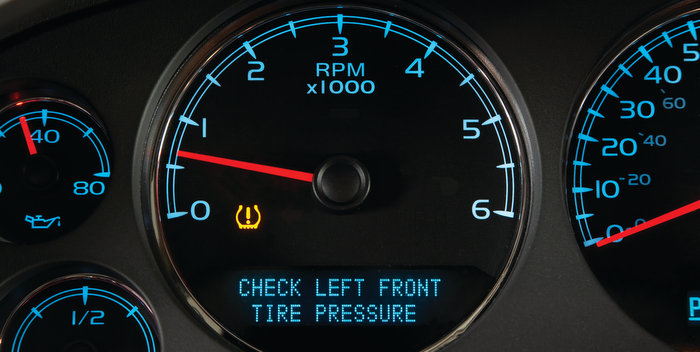
The Indirect TMPS system does not need additional components to be mounted on the wheels as it works with the ABS monitor. As a result, when the system needs to be replaced, additional labor costs and parts will not need to be paid for.
Advantages:
- Relatively inexpensive compared to a direct TPMS
- Requires less programming/maintenance over the years than a direct TPMS
- Less overall installation maintenance than its direct counterpart
Disadvantages:
- May become inaccurate if you purchase a bigger or smaller tire
- May be unreliable when tires are unevenly worn
- Must be reset after properly inflating every tire
- Must be reset after routine tire rotation
Difference Between Direct And Indirect
The main difference between the direct and indirect tire pressure monitoring system types is the manner in which they measure whether the tires are correctly inflated or not. But which TPMS type is the better one?
For everyday vehicles’ and customer needs, the direct TPMS system seems to work better. This is due to the nitpicky control of indirect TPMS systems, which need to be recalibrated each time the pressure in the tires is changed or when the tires are replaced. As a result, such systems give too much control to the vehicle’s owner, which is probably not a good idea with critical safety functions.
Furthermore, the biggest issue with indirect TPMS systems is that it only turns on the low tire pressure light when one tire has different pressure levels from the rest. However, when all four tires are deflated to a certain degree and function in that manner, the indirect TPMS will not notify the driver. This is still classified as low inflation pressure and it will cause an issue in the long run, but the indirect TPMS system will not notice it.
Under-inflated tires result in a shortened service life, a longer braking distance, a ruined fuel economy, and weaker traction. Therefore, direct TMPS sensors are more reliable for the average driver and they will result in fewer headaches during the vehicle’s performance.
Benefits Of Tire Pressure Monitoring System
The benefits of a tire pressure monitoring system (TPMS) are the exact opposite of what under-inflated tires cause. When the tire pressure is monitored in the tires, it gives the driver control over the vehicle and ensures that it can perform in the correct manner. A tire pressure monitoring system will allow the driver to notice incorrectly inflated tires, and to prevent any possible problems when the low pressure light comes on.
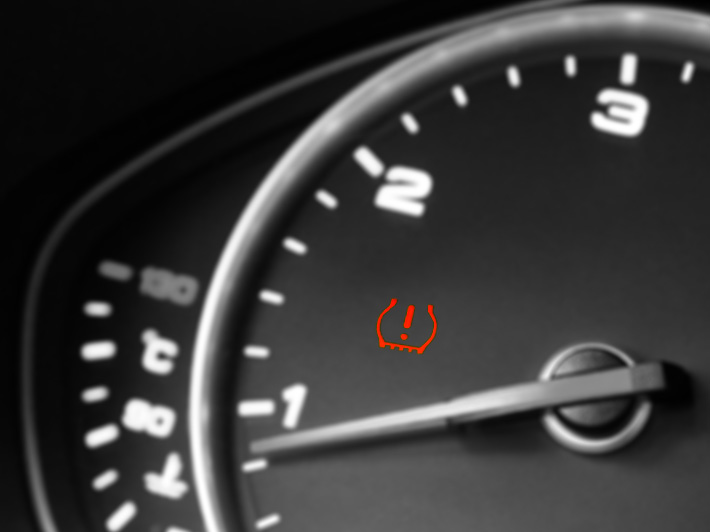
Proper tire pressure inflations optimize the tire’s surface contact throughout its performance. In this manner, they optimize the tire’s traction, ensure a shortened braking distance, improve the fuel economy and ensure a slower and even wear along the tread area.
Therefore, when the TMPS system receives regular maintenance and performs in the proper manner, it will ensure the vehicle’s optimal performance.
How Do TPMS Sensors Get Power?
TPMS sensors get their power from batteries built to last for several years. However, these batteries won’t last forever, and they will eventually lose their charge.
Typically, the battery attaches to the TPMS sensor assembly, so you can’t easily replace it. For this reason, you must change the entire tire pressure monitoring system if the battery dies.
Are TPMS Sensors Vehicle-Specific?
Yes, most TPMS sensors are vehicle specific.
In cars with factory-installed TPMS sensors, the sensors are always vehicle-specific. Automakers get these systems from specific suppliers, and the supplier can vary from model to model. If you use an incompatible TPMS sensor, it likely won’t work with your car’s system.
What about aftermarket sensors designed for cars that weren’t factory-equipped with a tire pressure monitoring system? In many cases, these aftermarket sensors are vehicle specific as well.
How to Program a Tire Pressure Sensor
To program a tire pressure sensor yourself, you need to follow the instructions on a compatible TPMS programming and diagnostic tool.
Some TPMS sensors need to be programmed before use. These sensors come blank, and the vehicle’s specific make, model, and year need to be entered. To tackle this task, follow the menu steps listed on your TPMS programming and diagnostic tool as mentioned above.
For many people, it will be easier to have a service technician do the programming. So, if you’d rather not handle this task yourself, you can get your tire pressure sensor programmed at a tire shop or auto repair facility.
What Is the Best Tire Pressure Monitoring System?
The best tire pressure monitoring system is one that’s compatible with your vehicle.

Many aftermarket systems work solely with vehicles made by certain automakers. There are many excellent systems out there, so to choose one that’s right for you, start by making sure the technology is compatible with the make and model of your vehicle.
What about tire pressure sensor replacement involving a system that was factory-installed on your car? In that case, you’ll need to replace the technology with the same tire pressure monitoring system installed on the car when the automaker first built it.
When To Replace The Tire Pressure Monitoring System
When the tire pressure monitoring system (TPMS) needs to be replaced depends on its type. The main reason for the TPMS’ replacement is damage, corrosion, and run-down batteries.
The location of the tire pressure sensors on the wheels makes them face a higher possibility of damage during the vehicle’s everyday performance. This damage can be caused by a flat tire, potholes, or accidents, which do not necessarily just harm the sensors but can create bigger issues as well.
Corrosion is usually the result of the road salt used in winter weather conditions. If the tires do not use snap-in, rubber valve stem TPMS sensors, the system faces a higher chance of corrosion and excessive rusting. Road salt can easily harm the rest of the vehicle as well.
TMPS sensors, like most electronic devices, run on battery life. While they utilize a battery-saving operating method, their lifespan is still limited. Generally, sensors can run for 5-10 years, depending on what type you decide to get. If you notice that the sensors are nearing the end of their battery life, it will be more cost-efficient to change them when replacing the tires – it will save you on the labor cost!
Still, regular checkups and maintenance of the tire pressure monitoring system are recommended for safety. It will allow the tire pressure sensors and the low pressure light to function in the necessary manner, without having to result in emergency fixes when the system breaks down, due to any of the before mentioned reasons.
Unfortunately, the TMPS sensor of tires cannot be repaired. When a TMPS unit goes bad for any reason, either the entire system or the bad unit will need replacing.
FAQs
What does it mean when the TPMS light comes on?
The purpose of the TPMS (Tire Pressure Monitoring System) is to alert you when tire pressure is too low and could create unsafe driving conditions. If the light is illuminated, it means your tires could be underinflated, which can lead to undue tire wear and possible tire failure.
Is the TPMS in the wheel or tire?
Direct TPMS: With this system, a sensor is mounted on each wheel of the car. These sensors monitor the air pressure in each tire.
Will my TPMS reset itself?
Once your tires are at the appropriate pressure, the light may go off on its own. If it doesn’t go off right away, driving at 50 mph for about 10 minutes should help the tire pressure sensor reset.
Above is information about What is TPMS? that we have compiled. Hopefully, through the above content, you have a more detailed understanding of How does a TPMS work? Thank you for reading our post.
